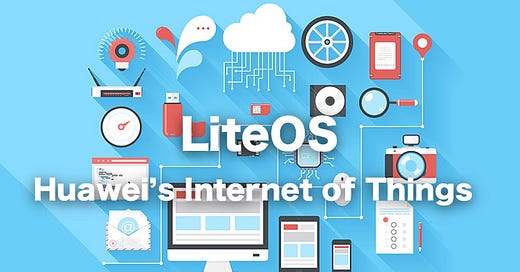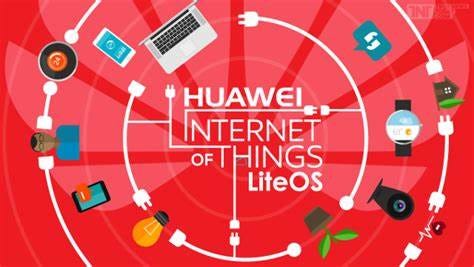OpenHarmony open source predecessor and lightweight ancestor is LiteOS. What is it? an IoT operating system and middleware
LiteOS – an IoT operating system and middleware
LiteOS – an IoT operating system and middleware
Introduction to LiteOS
The ancestor of HarmonyOS and OpenHarmony shared lineage of distributed operating systems. LiteOS was an open-source, lightweight operating system designed specifically for Internet of Things (IoT) devices and embedded systems. It was developed and maintained by Huawei for 5 years on the Chinese Gitee repo site from 2015 to its disbandment in December 2020, with 50 million units of Huawei IoT products from smart devices to smart wearables, 3 months after the first OpenHarmony 1.0 version under OpenAtom that carried the LiteOS kernel built for microcontrollers on the LiteOS M kernel module variant and ARM-based development boards called LiteOS A kernel module variant derived from the original operating system. LiteOS is optimized for low-power consumption, high-performance networking, and flexible connectivity in smart devices. It offers a rich middleware framework that facilitates rapid application development, making it suitable for a wide range of IoT applications.
Key Features of LiteOS
LiteOS offers a variety of features tailored for IoT environments:
Lightweight Design: With a minimal footprint, LiteOS is ideal for devices with limited memory and processing power.
Real-Time Capabilities: Ensures low latency and fast response times, crucial for time-sensitive applications.
Scalability: LiteOS can run on small embedded devices as well as larger systems with complex requirements.
Flexible Connectivity: Supports multiple communication protocols, including Wi-Fi, Bluetooth, ZigBee, and LoRa.
Security Features: Offers data encryption, secure boot mechanisms, and access control to ensure device security.
Middleware Integration: LiteOS simplifies integration with cloud platforms and third-party services.
Cross-Platform Compatibility: Supports ARM Cortex-M, RISC-V, and other architectures commonly used in IoT devices.
Architecture of LiteOS
LiteOS follows a layered architecture that improves modularity and efficiency. The core layers include:
Kernel Layer: Provides real-time scheduling, memory management, and hardware abstraction.
Middleware Layer: Offers libraries and APIs for communication protocols, device management, and data synchronization.
Application Layer: Includes customizable applications for specific IoT use cases, supporting both user-defined code and pre-built templates.
Driver Layer: Facilitates hardware integration by providing standardized driver interfaces.
Development Environment
LiteOS is designed for easy development and integration with multiple hardware platforms. The development environment includes:
IDE Support: Compatible with common IDEs like Keil, IAR, and GCC for streamlined coding and debugging.
API Libraries: Provides extensive libraries for networking, security, and peripheral control.
Device Drivers: Pre-built drivers simplify development by handling sensor, actuator, and communication module interfacing.
Cloud Integration: Seamlessly integrates with Huawei Cloud, AWS, and other IoT cloud platforms for data storage and remote management.
Applications of LiteOS
LiteOS is widely adopted across various industries that require reliable, energy-efficient IoT solutions. Common applications include:
Smart Home Devices: For controlling lighting, security cameras, and appliances.
Wearable Devices: Provides lightweight functionality for fitness trackers and health-monitoring gadgets.
Industrial IoT (IIoT): Enables predictive maintenance, asset tracking, and automation systems.
Smart Cities: Supports traffic monitoring, environmental sensors, and public safety systems.
Automotive Systems: Manages in-vehicle data communication and sensor networks.
Advantages of LiteOS
Minimal Resource Consumption: Designed to operate efficiently on devices with limited RAM and processing power.
Fast Boot Time: Optimized for rapid system startup, crucial for time-sensitive applications.
Flexible Deployment: Its modular structure enables developers to customize features as per device requirements.
Strong Security Framework: Provides encryption, secure communication protocols, and authentication mechanisms.
Extensive Ecosystem: Supports a wide range of hardware platforms, enabling flexibility for developers.
Challenges of LiteOS
Despite its strengths, LiteOS faces a few challenges:
Limited Community Support: Compared to established platforms like FreeRTOS or Zephyr, LiteOS has a smaller developer community.
Learning Curve: Developers unfamiliar with Huawei’s ecosystem may require additional time to master LiteOS features.
Vendor Dependency: Some advanced features are optimized for Huawei hardware and cloud services, limiting cross-platform flexibility in certain cases.
Conclusion
LiteOS was a powerful and lightweight operating system designed to meet the demands of modern IoT devices. With its real-time performance, flexible connectivity options, and secure framework, LiteOS is an excellent choice for developers creating energy-efficient and scalable IoT solutions. By leveraging LiteOS’s middleware capabilities and cloud integration features, businesses can accelerate their IoT deployments while ensuring robust performance and security.
Huawei's in-house independent open-source LiteOS was RTOS rich and POSIX compatible, targeted solely for the Internet of Things with its 10KB footprint that can power on AA batteries, competing with POSIX-based NuttX but didn’t have any Unix-like roots. It was once mistaken as a fork of a different Unix-like RTOS operating system of the same name from the University of Tennessee.









